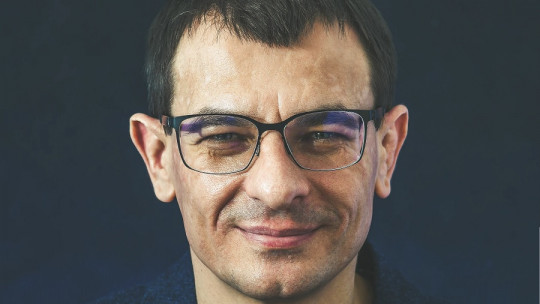Anxiety and OCD are interconnected, as obsessions create anxiety, and compulsions are carried out to try to control or relieve that anxiety. Anxiety arises as a natural response to the intrusive thoughts of OCD, since those who suffer from them perceive them as threatening. It can also arise due to daily worries, permanent stress, demands and bad news can cause anxiety.
For its part, the presence of obsessive rituals, habits and compulsions caused by OCD can mark a person’s life. In this PsychologyFor article, we explain How anxiety is related to OCD what are the causes of OCD due to anxiety and how to control it.
What is the relationship between OCD and anxiety disorder?
According to the DSM-V, obsessive-compulsive disorder (OCD) is itself a type of anxiety disorder. Although OCD has its own symptoms, both disorders are closely related. Next, we explain the relationship between OCD and anxiety disorder:
- They share anxiety as their main symptom : In OCD, anxiety arises primarily from obsessions and is temporarily relieved by compulsions. In generalized anxiety disorders, specific phobias, panic disorder, among others, anxiety can manifest itself in various ways, such as excessive worry, intense fear or panic attacks.
- Differences in the presentation of symptoms : Although anxiety is experienced in both, in OCD it is manifested through obsessions and compulsions. On the other hand, in anxiety disorders, the symptoms are evident as fear of specific stimuli, or avoiding certain situations, among others.
- Symptom overlap – Often, people with OCD may also experience other anxiety disorders, such as generalized anxiety disorder or panic disorder. This can complicate diagnosis and treatment, as symptoms may overlap or interact with each other.
- Similar treatment : Both OCD and anxiety disorders are treated with cognitive behavioral therapy (CBT), medication (such as antidepressants or anti-anxiety medications), or a combination of both. CBT for OCD focuses on exposure and response prevention (ERP), while for anxiety disorders it may include techniques such as cognitive restructuring and gradual exposure to scary situations.
Causes of OCD Anxiety
The causes of anxiety associated with obsessive-compulsive disorder (OCD) can be multiple, and biological, psychological and environmental factors intervene. Specifically, the main causes of OCD anxiety are:
- Genetic factors : There is evidence that OCD may have a genetic component. People with a family history of OCD are at higher risk of developing the disorder. Twin studies also suggest a genetic influence on predisposition to OCD and anxiety in general.
- Environmental factors : Experiencing stressful or adverse experiences in childhood or adulthood can increase the risk of experiencing anxiety and OCD. Chronic stress or major stressful events can trigger or increase symptoms of OCD and anxiety.
- Psychological and personality factors : There are personality traits, such as the tendency to worry excessively or the need for control, that can increase the predisposition to develop OCD and anxiety. Additionally, certain cognitive styles, such as the tendency to exaggerately interpret threats, may contribute to the manifestation of anxiety in OCD.

How to control anxiety due to OCD
Managing anxiety associated with obsessive-compulsive disorder (OCD) can be challenging, but there are effective solutions to reduce symptoms and improve quality of life. Here we will give you some tips on how to control OCD anxiety:
- Cognitive behavioral therapy (CBT): is the main treatment for OCD, especially exposure and response prevention (ERP) therapy. In ERP, you gradually expose yourself to situations or thoughts that trigger obsessions, while you learn to resist the compulsions. This therapy also helps reduce anxiety associated with OCD compulsions.
- Practice mindfulness : Practicing mindfulness can help people with OCD become more aware of their thoughts and sensations without reacting automatically. It teaches skills to accept and let go of obsessive thoughts without engaging in compulsions, which can reduce associated anxiety.
- Exercise regularly – Helps reduce anxiety levels and improve overall mood. Make physical activities that you enjoy, such as walking, running, swimming, or yoga, part of your daily routine.
- Perform relaxation techniques – such as deep breathing, progressive muscle relaxation, or guided imagery, can help reduce anxiety and stress associated with OCD. Spend time practicing these techniques regularly and find the one that works best for you.
- Set limits with compulsions : Try to set limits with your compulsions, that is, try to reduce their frequency or duration gradually. This may be challenging at first, but over time it will help reduce OCD anxiety.
- Lean on your loved ones : Share your situation with friends, family or support groups who understand you and give you a safe space to express how you feel. Social support is a crucial part of the recovery process, it helps reduce feelings of isolation and anxiety.
If you want more information on how to deal with it, we recommend these articles on How to overcome OCD and How to help a person with OCD.
This article is merely informative, at PsychologyFor we do not have the power to make a diagnosis or recommend a treatment. We invite you to go to a psychologist to treat your particular case.
If you want to read more articles similar to How anxiety is related to OCD we recommend that you enter our Clinical Psychology category.
- American Psychiatric Association (2013). Diagnostic and Statistical Manual of Mental Disorders (5th edition). Arlington: Panamericana Medical Publishing House.
Bibliography
- De la Cruz Villalobos, N. (2018). Obsessive Compulsive Disorder. Medigraphic Magazine, 3 (11), 14-18.
- Lozano-Vargas, A. (2017). Clinical aspects of obsessive-compulsive disorder and related disorders. Journal of Neuropsychiatry, 80 (1), 35-41.









